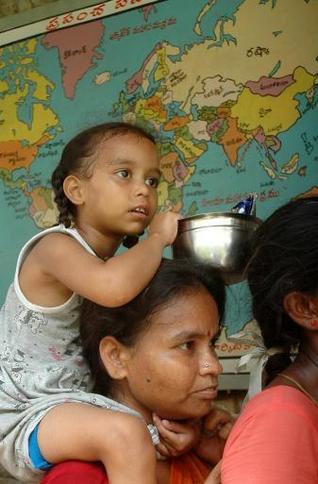
Children learn very early in life to put themselves in others’ shoes. But to get that going, they must share a positive and caring relationship with parents and caretakers
Empathy, the ability to put yourself in someone else’s shoes and recognise and respond to what that person is feeling, is an essential ingredient of a civilised society. Manifestations of empathy often show up early in life, as when a toddler brings a favourite toy or blanket to another child who is injured or in distress. Some experts maintain that infants display empathy when they whimper or cry upon hearing another baby cry.
Lacking empathy, people act only out of self-interest, without regard for the well-being or feelings of others. The absence of empathy fosters antisocial behaviour, cold-blooded murder, genocide.
Children may enter the world with different capacities for empathy, a result of neural connections in the brain. The capacity for empathy may be partly or wholly lacking in disorders like autism and schizophrenia, in which the mind is focused inward.
Environment is crucial
But in otherwise normal children, the environment in which they are reared can make a big difference in whether empathy is fostered or suppressed. Healthy self-esteem is essential to empathy, so anything that helps children feel good about themselves will also help them recognise and respond effectively to the feelings of others.
If children are to relate positively to others, they must feel secure themselves and “have a secure attachment to another person,” said Carolyn Zahn-Waxler, a psychologist at the University of Wisconsin. Infants and young children whose own distress is ignored, scorned or, worse yet, punished, can quickly become distrustful of their environment and feel unsafe.
Nancy Eisenberg, a psychologist at Arizona State University, agrees. “Children need a positive, caring relationship with their parents or caretakers,” she said in an interview, “if they are to be able to go beyond themselves to care about others.”
“Empathy comes from being empathized with,” Dr. Stanley I. Greenspan, a clinical professor of psychiatry and paediatrics at George Washington University School of Medicine, wrote in his book “Great Kids”.
Children should also be helped to recognise their own feelings and express them, he wrote. By learning to identify and label their feelings, children are better able to recognise the feelings of others. For example, when a child becomes frustrated with a toy car and throws it across the room, his caretaker could say something like: “You’re feeling upset because the car isn’t working the way it should. You don’t like it when toys don’t work.”
Zahn-Waxler says the kind of discipline a child receives should “help the child regulate emotion, to calm down rather than become more agitated”. She advises parents to stay calm: “The more emotionally aroused you are, the more aroused the child is likely to become. Hitting or screaming at a child results in anger and fear and interferes with the child’s ability to care for others.”
Eisenberg emphasised that in addition to avoiding physical punishment, “children should never be threatened with a loss of love” for misbehaviour.
Caretakers can help young children understand how other people feel, say, when a child cries because a toy breaks or is snatched by another child. When a child acts kindly toward someone, Marjorie Taylor, a psychologist at the University of Oregon, suggests that saying something like “You’re very kind for doing this” or “You’re the kind of person who does nice things like that” can help make empathy a part of a young child’s identity.
Even very young children need to know how their behaviour affects others, experts say. They need to have it explained why certain behaviours are hurtful or helpful, and how to make up for bad behaviour.
“Be really explicit, because children can’t draw conclusions as easily as an older person,” Taylor said.
Also helpful, she said, is reading books together and talking about how people (or animals) in a story feel and why they feel that way.
Even televised events of natural disasters can help, by encouraging a child to imagine what it must be like for people whose lives are devastated by an earthquake or tsunami.
Although an early start is ideal, experts say it is possible to instil empathy later — even, for example, in children whose emotional security was neglected in an orphanage.
Undoing the damage may require extra effort on the part of adoptive parents, as well as unconditional love.
Parents and teachers can set a good example of empathetic behaviour by how they behave themselves. The old saying “Do as I do” has particular relevance for fostering empathy in children.
“Parents need to be models of altruism, compassion and caring,” Zahn-Waxler said. “It’s not enough to talk the talk. You need to be seen doing it and you need to show caring behaviour toward your children. Remain calm, not punitive.


